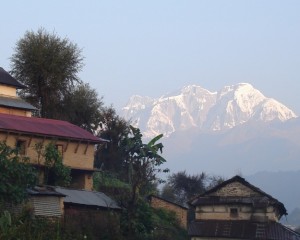Is Everest Base Camp Dangerous? Debunking the Myths
Everest base camp is the dream of every mountain enthusiast and trekker. But there is a joint statement that the Everest base camp is dangerous. Well, let us clear all of those unwanted myths.
Everest Base Camp is located at a height of 5000 meters between the towering peaks of the Himalayas. The tales of trekkers dealing with extreme conditions and facing danger on the trail have given people a hard time starting their trekking journey.
However, the reality is different from this perception. While there are difficulties, everyone can start the Everest base camp. Stay with us as we clear all the myths of Everest base camp being dangerous to help you make your way to this amazing trail.
5 Common Myths of Everest Base Camp
The trail of EBC is challenging, with rocky paths and tricky glaciers. On the other hand, the weather swings between extremes. All of this combined makes it a bit hard for trekkers.
But despite all of this, there are false things around the market about Everest base camp. Let us clarify each and everything.

Everest Base Camp is Always Crowded and Chaotic
There's a common belief that Everest Base Camp is always bustling with crowds and chaos. However, a closer look reveals the reality during peak trekking seasons from March to May and September to November.
EBC does experience higher foot traffic as adventurers from around the world come to the region. in the on-season.
Yet, outside of these peak periods. In the off-season, the serene environment and the breathtaking beauty, and Everest panoramic view make the trek magical without the crowds.
However, efforts are being made to manage the increased number of visitors during on season. Local authorities and conservation organizations are working to preserve the ecosystem of the Everest region.

EBC is Inaccessible to Non-Experienced Trekkers
There's a misconception that Everest Base Camp is only accessible to experienced trekkers. However, EBC offers a range of trekking routes suitable for various skill levels accessible to both beginner and seasoned adventurers.
Professional and certified trekking agencies like Nepal Vision Trek provide tailored itineraries and support services to ensure a safe and enjoyable journey.
Plus, the advanced infrastructure and tea house accommodation help to take care of the trekkers' needs. But everyone requires physical fitness and preparation to deal with potential challenges. So, hop on that training schedule months before you start your trek.
Everest Base Camp is Extremely Dangerous
There's a widespread belief that Everest Base Camp is an extremely dangerous destination. However, it's essential to know between the real risks and the perceived danger come with trekking in the EBC.
The high altitude, harsh weather conditions, and rugged terrain are challenges present on the trail. With proper preparation and safety measures, the risks can be effectively reduced.
Likewise, the proper guidance and preparation on acclimatization, weather forecasting, and emergency response protocols help to ensure the safety of trekkers.
Altitude Sickness is Inevitable
In the altitude of 3000 meters above altitude sickness is inevitable. Altitude sickness occurs when the body fails to acclimatize adequately to the reduced oxygen levels at higher altitudes.
The symptoms such as headache, nausea, and fatigue are common concerns for trekkers ascending to those heights. However, it is not inevitable. Prevention and acclimatization strategies help to reduce the risk of altitude sickness.
Gradual ascent, adjusting to the altitude, staying hydrated, maintaining a balanced diet, and avoiding alcohol and tobacco help to tackle the altitude sickness.
You can identify their early signs and descend to lower altitudes if necessary. Additionally, medications such as acetazolamide (Diamox) can help to increase breathing and reduce the risk of altitude sickness.
Everest Base Camp is Always Subject to Avalanches and Rockfalls
The EBC is surrounded by the towering peaks. So it is evident to think that there are avalanches and rocks falling in the surrounding area. While it sounds dangerous. But it's not always like that.
You can know about the places where avalanches and rocks fall like steep slopes and when it's snowy or icy. Additionally, the risk changes depending on the season, like danger in spring and autumn when there's more snow and ice moving around.
Guides and experts watch the weather and choose the safest paths. With the right knowledge and care, people can trek to Everest Base Camp safely and enjoy the adventure!
To wrap up, Everest Base Camp is a mix of excitement and challenges. There are huge crowds, danger, sickness from high altitudes, and avalanche threats on the trail. It's important to prepare well, stay healthy, and know how to keep safe.
Nepal Vision Treks is committed to responsible tourism and ensuring everyone has a memorable experience while respecting the local communities and environment.
FAQS







